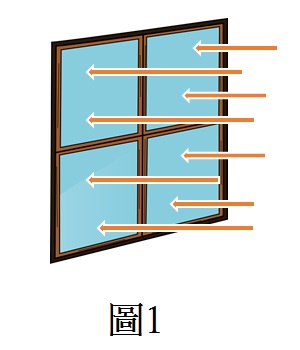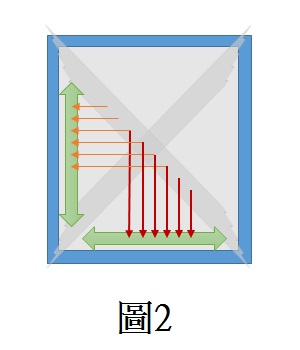- About us
- Funding services
- Estimated Application Timetable for FDCT Funding Schemes
- Account Registration
- Guidelines, Forms, Styles, and Templates
- Funding Scheme for Scientific Research and Innovation
- Funding for enterprise innovation and R&D
- Funding Scheme for External Science and Technology Cooperation
- Funding Scheme for Scientific Research Platform
- Funding Scheme of Macao for Science and Technology R&D Talent
- Past Project Funding Schemes (2024 or earlier)
- Connecting Macao and Hengqin
- S&T cooperation
- S&T award
- Transformation of Achievements
- Information disclosure
- Frequently asked questions (FAQ)
- Opinion Survey.
- About us
- Funding services
- Estimated Application Timetable for FDCT Funding Schemes
- Account Registration
- Guidelines, Forms, Styles, and Templates
- Funding Scheme for Scientific Research and Innovation
- Funding for enterprise innovation and R&D
- Funding Scheme for External Science and Technology Cooperation
- Funding Scheme for Scientific Research Platform
- Funding Scheme of Macao for Science and Technology R&D Talent
- Past Project Funding Schemes (2024 or earlier)
- Connecting Macao and Hengqin
- S&T cooperation
- S&T award
- Transformation of Achievements
- Information disclosure
- Frequently asked questions (FAQ)
- Opinion Survey.
How to prevent glass from shattering during a typhoon?
During the passage of typhoon, window glass is easily blown out by strong wind. To prevent glass from shattering into bits, first of all, we should know the basic characteristics of glass. In general, glass is a mixture composed of molecules such as silicon dioxide and sodium oxide, etc. This mixture can transmit light, however its molecular combination is irregular, which means that glass is hard but not malleable, and it doesn’t easily bend but easily crack. Therefore, to prevent the glass from cracking, it is necessary to strengthen the intermolecular force from the outside, so that the attraction between molecules is not easy to break.
The simplest way to increase internal tension from outside is to attach duct tape on the glass. Duct tape is a polymer of organic molecules with strong intermolecular forces. Contrary to glass, it has low hardness, but high toughness; it’s not easy to break, but easy to bend. Attaching duct tape on the glass doesn’t only intuitively make us feel safer. When a typhoon passes by, even if the glass is blown out, the shards will be held together by the duct tape; actually, the glass is much more impact-resistant due to the additional pulling force exerted by the duct tape.
So, how to tape up windows in a most effective way? We can imagine that when the wind blows, as shown in Figure 1, wind force is basically exerting the same pressure on the glass panes of each window. According to the proportional relationship between force, pressure and area in the physics equation, we can see that the larger the glass window is, especially the floor-to-ceiling window, the greater the force will be. Therefore it is much easier to be blown out. As a matter of fact, the whole glass is too big to tape up. If there are only two pieces of duct tape, why should we tape an “X” instead of a cross on the glass? This is a question related to “unload” the force. As indicated in the news, the glass panes are blown out in most cases, but very few window frames are broken or bent. This is because window frames are normally made out of metal such as iron, aluminum alloy, etc. Metal atoms are regular arrangement in the crystal structures with strong binding force that holds the metallic crystal together. That’s why metals are more malleable than glass. To make glass more impact-resistant to strong winds, we need to “unload” the wind force exerted on the glass panes to the metal window frames.
The advantage of the X-type taping is that it has two hypotenuses relative to the horizontal and vertical window frames, while the cross-type taping method does not. As shown in Figure 2, the force exerted on the glass will be firstly converted into the tensile force in the duct tape, and the diagonal tension can be resolved into horizontal and vertical components that will be borne by the horizontal and vertical window frames, respectively. As for the cross-type taping, it is impossible to resolve the force, and the force hit on the glass can only be partially converted into the tensile force in the duct tape. This is also the reason that many high-rise buildings, such as the Bank of China Tower in Hong Kong, are designed into triangular architectures. Needless to say, it is more effective to tape a star shape to resist wind forces.


Figure 1 Figure 2
Sitemap
- About us
- Funding services
- Scientific research funding
- Science Popularization Funding
- Patent funding
- Joint funding
- Funding for enterprise innovation and R&D
- Project Funding Program of Smart City Applications and Solutions of Macao
- Scientific Research Devices and Equipment Funding
- Postdoctoral Researchers Funding
- Funding for Overseas Training of Young Scientific Researchers
- Key R&D Program
- Funding Scheme for Laboratories and R&D Centers
- S&T cooperation
- S&T award
- Science popularization activity
- Student summer camp and teacher science popularization corps
- 2017 S&T Week and Chinese Civilization & Technology Innovation Exhibition
- Junior S&T Talents Training Program
- Potential Capacity Development Program
- Summer Vacation Courses 2018 of Tel Aviv University, Israel
- XLAB International Science Camp 2018
- Popular science about windstorm disasters
- Information disclosure
- Smart city
- Related links
- FAQ

Office address: Avenida do Infante D. Henrique, No. 43-53A, Macau Square, 8th Floor, Unit C and 11th Floor, Unit K, Macao (To apply for project funding, please go to 11th Floor, Unit K)
Office hours: Monday to Thursday: 9:00-13:00, 14:30-17:45;Friday: 9:00-13:00, 14:30-17:30;Tel.: 28788777
Copyright(C) 2021 ALL right reserved.
Office hours: Monday to Thursday: 9:00-13:00, 14:30-17:45;Friday: 9:00-13:00, 14:30-17:30;Tel.: 28788777
Copyright(C) 2021 ALL right reserved.

